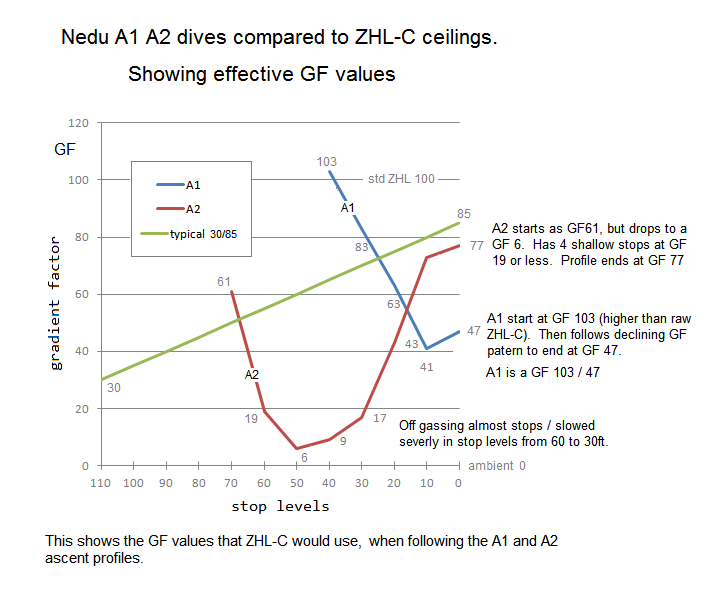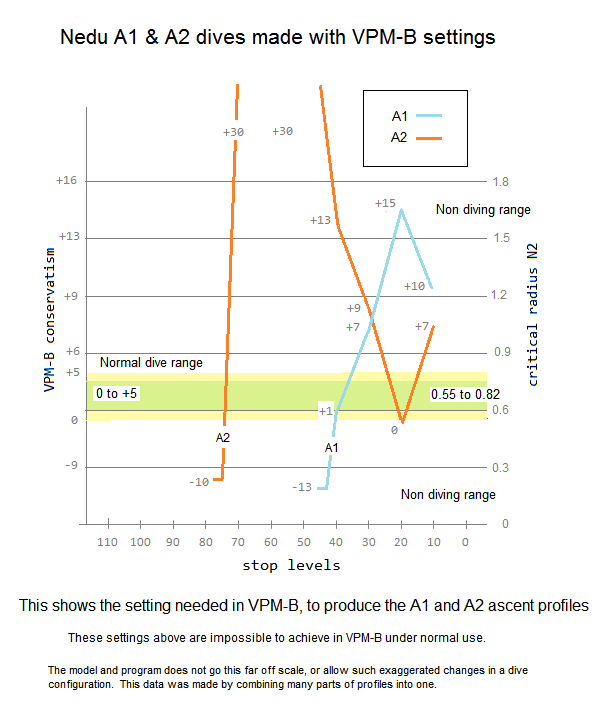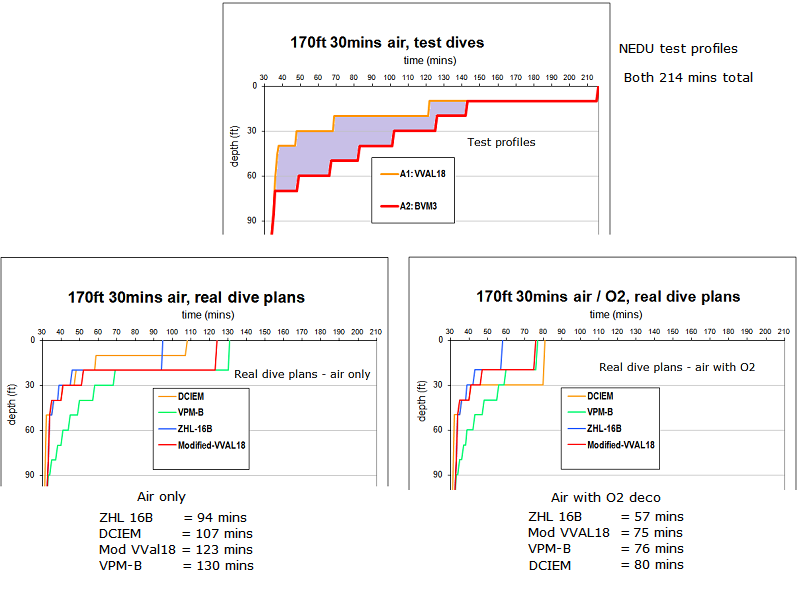Try to find a practical balance or compromise of Bubble/Dual Phase Models like RGBM, VPM, Ratio Deco -minimizing Fast Tissue Supersaturation stress with deep stops- while extending out shallow time on Oxygen to effectively off-gas the resultant inert loading on the Slow Tissues as implied by the NEDU Study.
By using & applying Buhlmann GF's for instance, if I were doing two OC deco dives per day for three or four consecutive days-in-a-row on Deep Air on a month long Indo-Pacific/Micronesia tech wreck expedition, then I would program my Petrel Computer from Day 1 thru 4 something like 40/70; 40/65; 40/60 and finally 40/50 for Day 4. On Day 5 take a break from diving to further off-gas those slow tissues & reset CNS O2 clock, and then continue the same three or four day consecutive deco dive day with one day-off schedule/pattern.
In your case, switching to a CCR would be especially valuable for 2 reasons:
1) "Best mix" during the ascent tends to protect fast tissues as the fO2 is going up before you even get to a gas switch. UWSojournor had a description of this effect in an old post somewhere, perhaps he can link it here. That would allow you to increase the GFlow to something greater than 40. And those lowest stops will probably clear as you ascend anyway, just from the fO2 increase.
2) You could add a dollop of helium to your mix for pennies. The gradient for helium on the surface is as high as it can possibly be. So there is basically no "residual helium time" to account for day after day. You still might want to take a day off or only do 1 dive in a day during the course of a week+, but it could be more at you leisure instead a hard date.
You can still extend out the shallow stops and ratchet down the GFhighs as you progress of course, but that becomes one of several tools adding together to enhance your offgassing.








